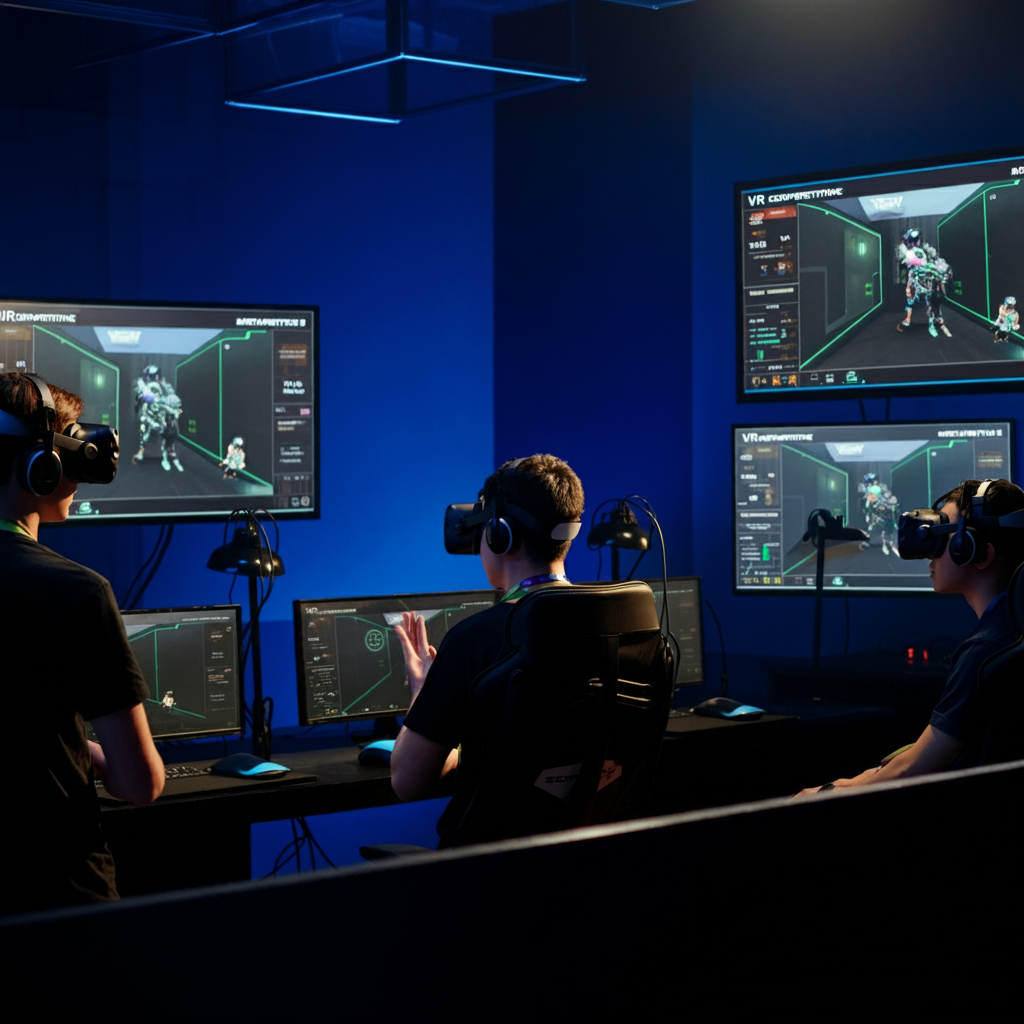Virtual reality (VR) is making significant strides in the competitive gaming arena, influencing game balance and fairness in profound ways. As VR technology continues to evolve, it introduces new dynamics that affect how games are designed, played, and perceived, reshaping traditional notions of balance and fairness in competitive play.
One of the primary ways VR impacts game balance is through its immersive and interactive environment. Unlike traditional gaming setups, VR places players within a fully three-dimensional space, allowing them to interact with their surroundings in a more natural and intuitive manner. This immersion can lead to more balanced gameplay experiences by providing players with a richer and more engaging environment. For instance, VR games often incorporate mechanics that require players to physically move, look around, and interact with objects in their virtual space. These mechanics can level the playing field by making it more difficult for players to rely solely on traditional gaming skills, thus ensuring that success is more dependent on strategic thinking and adaptability rather than just reflexes or precision.
In terms of fairness, VR offers new tools for creating more equitable gaming experiences. Developers can use VR’s spatial capabilities to design environments that accommodate different playstyles and strategies. For example, VR allows for the creation of dynamic and adaptive game worlds where players must navigate obstacles and leverage environmental features. This can help prevent any single strategy or playstyle from dominating, as players are encouraged to adapt to the evolving virtual landscape. Additionally, VR’s ability to simulate realistic scenarios can help developers test and refine game balance more effectively, ensuring that gameplay remains fair and enjoyable for all participants.
However, VR also presents challenges related to game balance and fairness. One significant issue is the variance in VR hardware and player setups. Differences in VR headsets, controllers, and play spaces can lead to inconsistencies in how games are experienced, potentially affecting gameplay balance. Developers must account for these variations to ensure that all players have a level playing field, regardless of their equipment. This requires careful design and testing to ensure that the game’s mechanics work consistently across different VR setups.
Another challenge is the physical and cognitive demands of VR gaming. The need for players to move around and interact with the virtual environment can introduce physical strain or discomfort, which may affect performance. Ensuring that games are designed to accommodate various physical abilities and comfort levels is crucial for maintaining fairness. Developers must consider factors such as motion sickness and physical space limitations to create a balanced and accessible experience for all players.
The influence of VR on game balance and fairness also extends to competitive events and tournaments. As VR gaming becomes more prominent in the competitive scene, organizers must address issues related to equipment standardization, player safety, and fair play. Establishing clear guidelines and standards for VR equipment and gameplay can help ensure that competitive events are conducted fairly and that all participants have an equal opportunity to succeed.
In summary, VR is reshaping the landscape of game balance and fairness in competitive play by introducing new mechanics and interactions that influence how games are designed and experienced. While VR offers opportunities for creating more engaging and balanced gameplay, it also presents challenges related to hardware variance and physical demands. As the technology continues to advance, ongoing efforts to address these challenges and refine VR game design will be essential for ensuring a fair and enjoyable competitive gaming experience.

